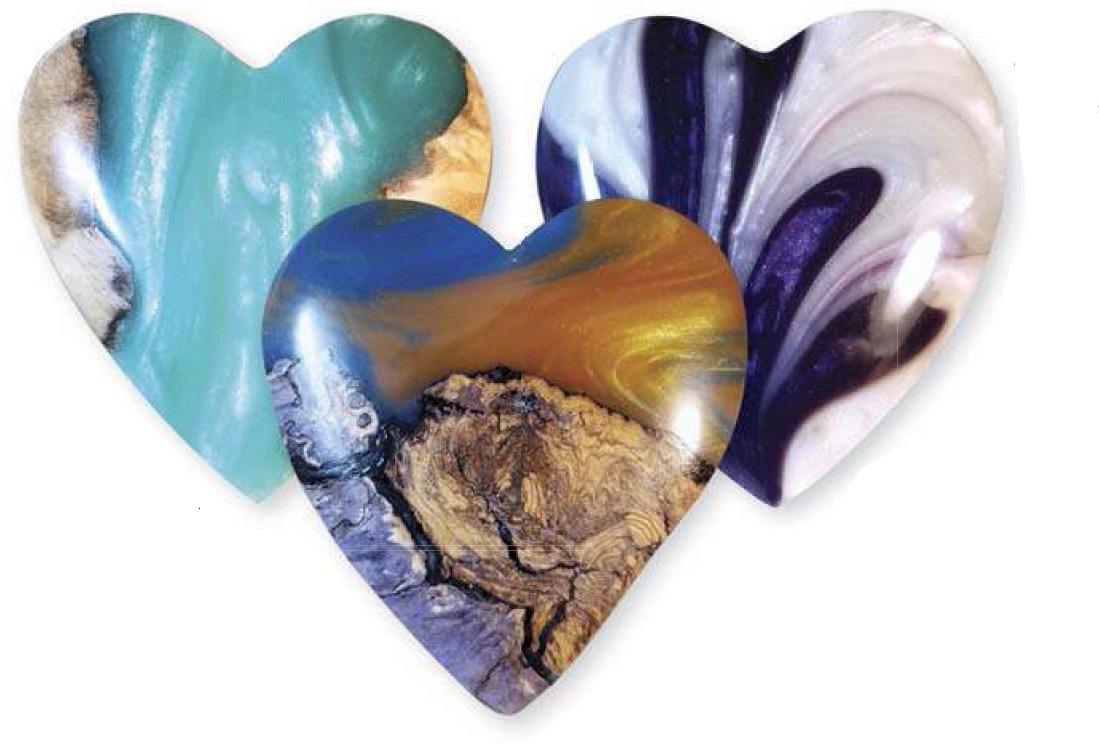BY RUSS KANIUTH
In the May issue, I discussed making composite materials out of natural stone and epoxy, this month I’d like to venture further into the subject by discussing other types of polymers that can be used for lapidary. While there are many lapidaries that are purists, and won’t consider working with anything but natural stone, there are many others who like to get creative and try new things. The last few months I have been researching many different materials and decided to try some acrylics mixed with burl wood, and polyester composites that are generally used to make knife and gun scales. Since these materials are oft en very decorative and meant to be cut and polished, I figured it wasn’t a far stretch to use in making cabs.
One variation was a mix of alumilite that was dyed and sometimes mixed with pearl mica powders. Another variation was a different polyester composite, which was also dyed and mixed with pearlescent coloring. The wood burl and acrylic had some nice scenes to be found, like rivers running through the cab, and nice beach scenery, while the poly composite had beautiful swirling colors. The colors were just so bright, bold and eye-catching. Because both had quite an extensive catalog of colors and patterns, it was tough to choose which I liked more.

When buying the wood burl/acrylic, it is generally sold in blocks that need to be cut into slabs. They do however usually come in smaller sizes that can be easily cut on a 10” lapidary saw with a diamond blade. The poly composite comes in 3/8” thick sheets that vary in size. I usually buy the smaller-size pieces (5 1/4” x 1 3/4”). This made it easy to draw out several cabs and trim on the 10” saw. Working with alumilite is rather simple, but there are some precautions to keep in mind.